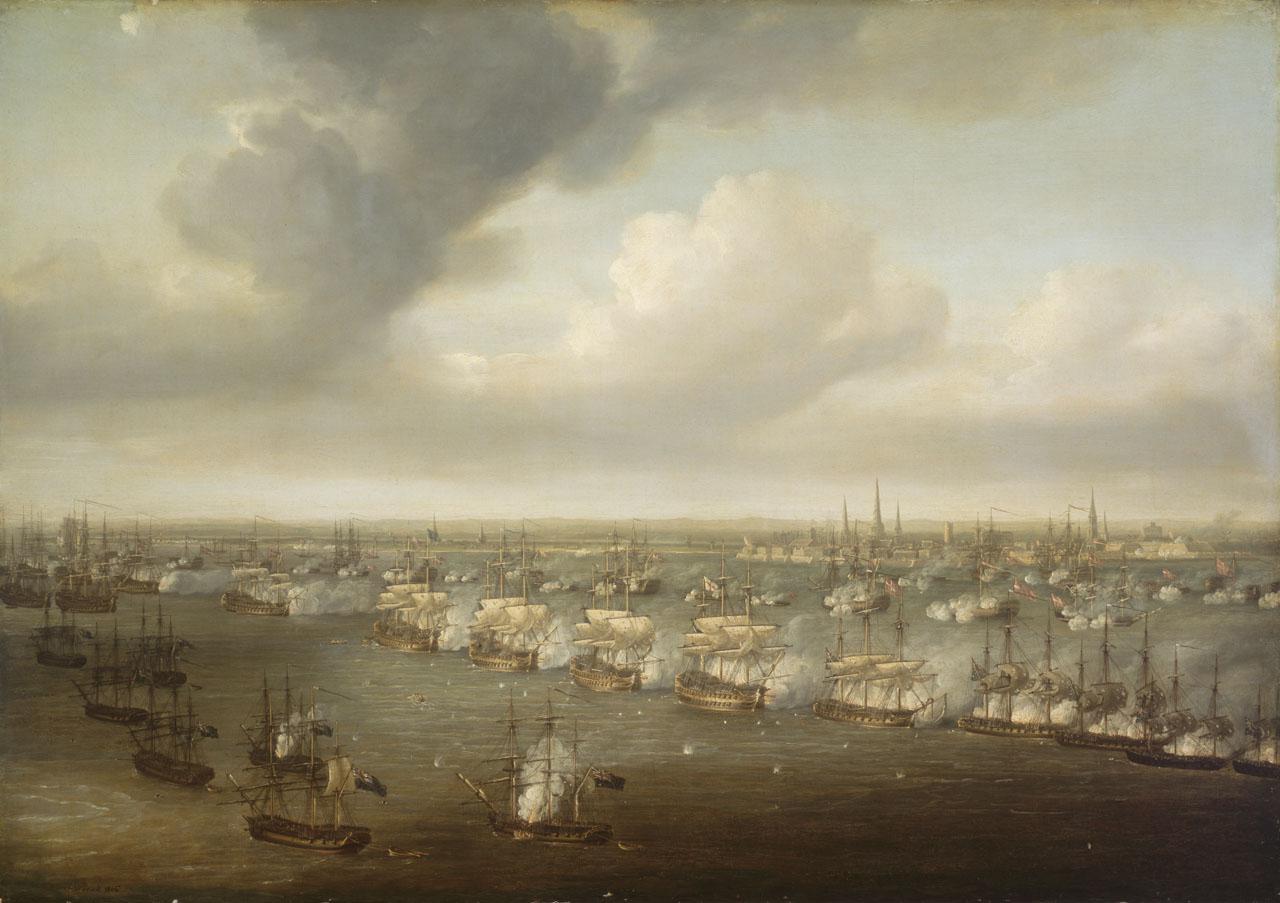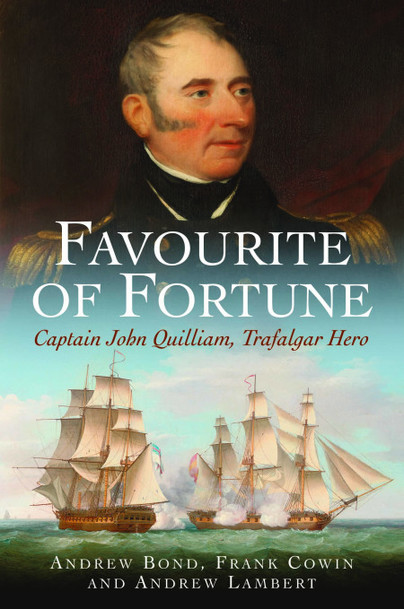Author Guest Post: Andrew Bond
Friday April 2nd 2021 is the 220th anniversary of the first Battle of Copenhagen, the final fleet action of the French revolutionary wars of 1792 to 1802. For 30-year old Lieutenant John Quilliam, second lieutenant of the 38-gun frigate HMS Amazon, it marked the moment when his already exceptional career moved on to a higher plane as he came under the patronage of Vice Admiral Lord Nelson, then and now Britain’s most famous sailor.
In contrast to most of his contemporaries in the service, Quilliam was a late starter. While they typically began their careers aged 10 or 11, Isle of Man born Quilliam joined the staff of the Royal Dockyard at Portsmouth at the age of 13 and didn’t go to sea in a King’s ship until he was 20. The opportunity to do so came when the British government decided to send the Irish peer Lord Macartney on a trade mission to China. His transport was the 64-gun battleship HMS Lion which Quilliam joined as an Able Seaman in May 1792.
The voyage to Tien-Sing (Tianjin), the port for Pekin (Beijing), via Rio de Janeiro, Batavia (Jakarta) and Macao, took exactly 10 months. However, hardly had Macartney and his suite reached their destination and Lion had refitted than news of the outbreak of war with revolutionary France reached them. Macartney saw it as his duty to return home immediately, with Lion providing protection for that year’s hugely valuable fleet of East Indiamen.
With Macartney and the East Indiamen safely returned, Lion paid off at Chatham in October 1794 and the by now fully fledged man-of-war’s man John Quilliam transferred, along with most of the ship’s company, to the 98-gun three decker, HMS Prince George. He spent little more than a year in her, during which he was promoted quarter master’s mate and experienced his first fleet action, the inconclusive Battle of Groix. Later the same year he transferred to the 74-gun Triumph as master’s mate, the promotion putting him firmly on the path to a commission.
Quilliam’s nearly three years in Triumph were full of incident, including as they did both the Spithead mutiny of 1797 and the Battle of Camperdown the following October, his second fleet action. Triumph was at the centre of the ferocious engagement with the Dutch, the most complete British naval victory over an enemy of equal strength up to that time. With many of the officers casualties, Quilliam was made acting lieutenant, his dockyard experience proving invaluable as the survivors fought to save the ship and bring her and her prize back to Yarmouth.
By the following June Quilliam had completed the minimum service required to sit the examination for lieutenant and, having satisfied the three captains on the Navy Board, in October 1798 joined the 24-gun sloop Chapman as second lieutenant. His first short passage in her very nearly proved to be his last as she narrowly avoided disaster on the Cornish coast while escorting a convoy out of Falmouth. At the end of the year, however, recognised as too valuable a prospect to be languishing in coastal convoys, he was transferred to the crack 38-gun frigate HMS Ethalion as third lieutenant. Now in the front line of the naval war with France and Spain, the move brought Quilliam undreamt of wealth in prize money and another close encounter with disaster.
In October 1799 Ethalion and three other frigates captured two Spanish frigates homeward bound from Mexico with silver and gold worth a modern day £51 million. Quilliam’s share made the 28-year old seriously rich. Just two months later, however, in the pitch dark of Christmas Eve, Quilliam was officer of the watch when Ethalion was wrecked on a reef as she worked her way up to reconnoitre the French fleet in Brest. He, the captain and the entire ship’s company were acquitted at the subsequent court martial which judged their conduct ‘highly praiseworthy’ and two months later, in March 1800, Quilliam joined Amazon as second lieutenant.
The events which led to the Battle of Copenhagen were set in train when the Russian Tsar persuaded Denmark, Sweden and Prussia to join him in a League of Armed Neutrality which threatened to deny Britain access to Baltic and hence to vital naval stores. When diplomacy failed, a fleet of 53 sail including 15 battleships under Admiral Sir Hyde Parker was despatched to persuade the Danes and the rest of the League to see reason. When they belatedly anchored off Copenhagen, it was in Amazon, under her captain Edward Riou, that Parker’s second-in-command, Lord Nelson, assessed the Danish defences and in Amazon that he, accompanied this time by Parker, returned the following morning to convince the commander in chief that the defences were not impenetrable. Finally, having sounded and buoyed the channel, it was Amazon which led the 12 battleships of the attacking force into its starting position on the afternoon before the battle.
When, on the morning of April 2nd, the squadron got under way, Nelson planned for each ship of the squadron to anchor in turn opposite the Danish line. Almost immediately the plan started to unravel, however, as a number of ships ran aground, leaving the lighter frigates having to anchor opposite the strongest point in the Danish defences. There they slugged it out for an astonishing hour and a half until Hyde Parker’s signal to withdraw, famously ignored by Nelson, forced Amazon to turn away, exposing her stern to a raking fire which killed Captain Riou. The heavily damaged Amazon limped out of the action and, soon after, all firing ceased as Nelson negotiated an armistice.
Quilliam had almost certainly first met Nelson before the battle but it was not until the following August that they became much better acquainted. By then Nelson had taken charge of all the forces deployed to repel a threatened French invasion and Amazon, still bearing some of the scars from Copenhagen, became his flagship. Quilliam, by now her first lieutenant, would have had almost daily contact with the admiral for the next two months until the provisional peace treaty allowed Nelson to surrender his command. Those two months were sufficient to ensure that, when a mere 18 months later, war once more threatened and Nelson was appointed to the Mediterranean command, Quilliam was one of the 10 lieutenants selected to serve on his flagship, HMS Victory.

………………………………………………………………

Favourite of Fortune is available to preorder here.

